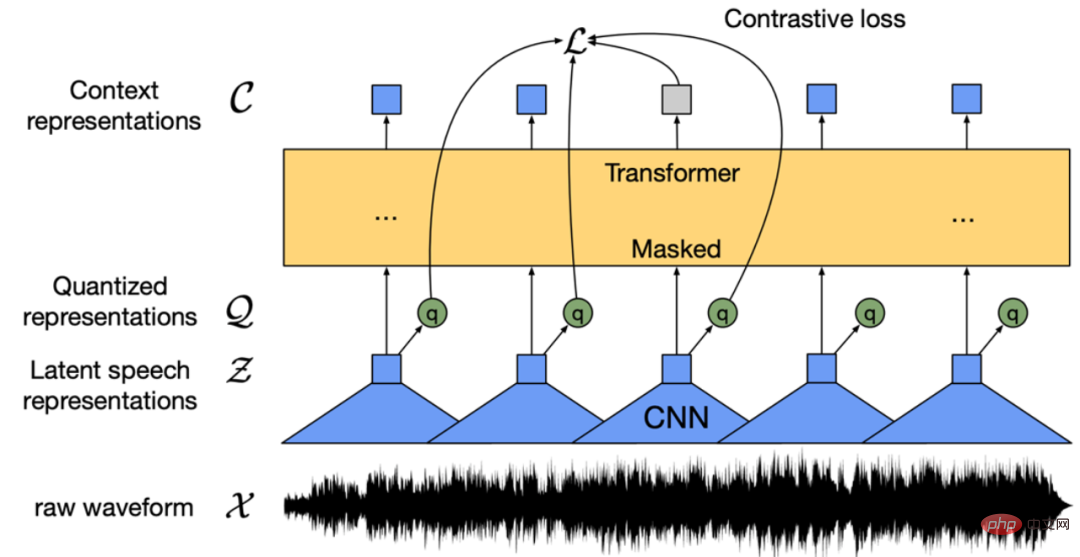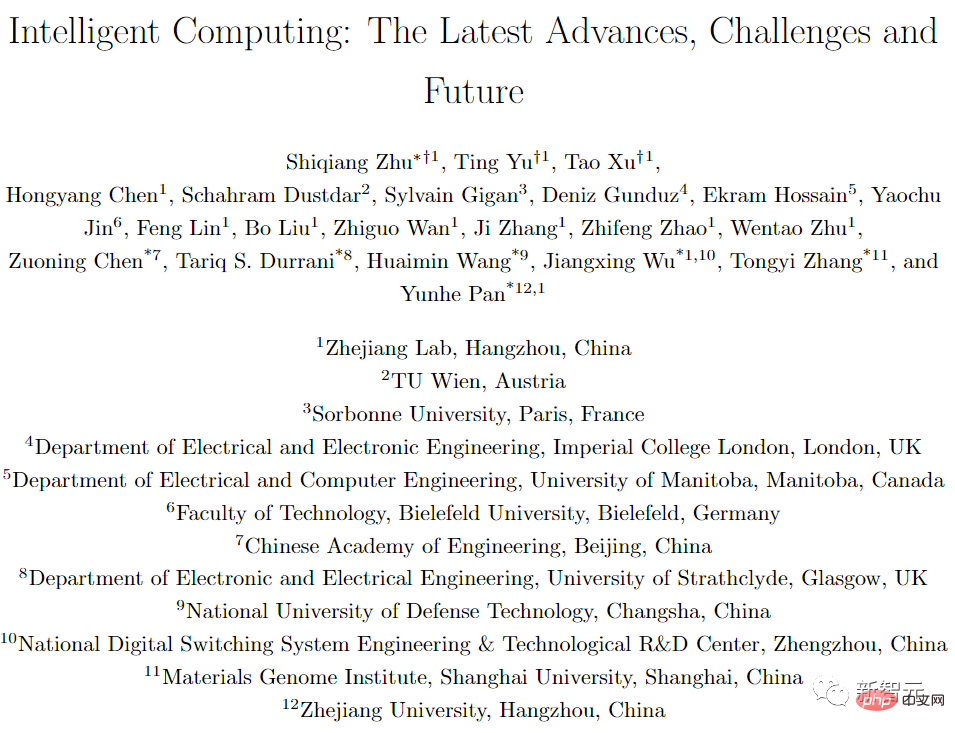 Technology peripherals
Technology peripherals AI
AI Developers' 'second brain” is coming, GitHub Copilot is updated, and human development participation is further reduced
Developers' 'second brain” is coming, GitHub Copilot is updated, and human development participation is further reduced
What makes Andrej Karpathy lament that the contribution of humans in directly writing code in the software development process will become smaller and smaller, and the role of direct input and supervision will become more abstract. Eventually, the role of humans will simply be to do basic review and validation, rather than being the primary programmer and developer.
It turns out to be GitHub’s newly released Copilot Workspace, which reimagines developers’ internal processes. If AI development tools are developers’ second pair of hands, then Copilot Workspace will be developers’ “second brain.”
In the process of coding, the most troublesome thing is encountering an unfamiliar software warehouse, programming language or framework. The difficulty caused by solving these problems may delay your completion of the task, or even make it impossible to complete it at all. It's not easy to master these quickly and get back on your feet within the time limit. But Copilot Workspace may be able to help you get twice the result with half the effort, and even help you complete larger and more complex tasks.
Copilot Workspace, your “second brain”
Copilot Workspace focuses on task selection, intention expression and working with AI to find solutions plan. The aim is to reduce complexity and increase productivity, while also maintaining important aspects of software development such as decision-making and creativity and autonomy.
You can ask Copilot Workspace a question and it will automatically suggest a solution. Copilot Workspace has the full context of the issue (including all comments and replies) and the code base, so it understands both what you want to do and what exactly your code is about. If the solution proposed by Copilot Workspace isn't quite right, you can edit any step in the process, from actions to plans to code, all in natural language.

Copilot Workspace answers GitHub questions

In the editing process Steps to make adjustments
Copilot Workspace operates at the granularity of the entire software package and enables coherent modification of multiple files across different programming languages. It can handle both core coding tasks and scaffolding-type tasks, such as "Building a test framework" or "Writing GitHub Actions workflows for continuous integration." It is already used in GitHub Next for development of Copilot Workspace itself and other projects.
Task-centric workflow
Copilot Workspace can help developers complete complete development tasks, which are usually based on GitHub issues. Form specification and tracking. Therefore, Copilot Workspace can take a problem as input, automatically extract the current behavior of the code, propose a new behavior that solves the problem, develop a plan, and implement the plan (that is, write the code). Copilot Workspace has the full context of an issue, including all comments, and can even follow links within the issue to extract information to help complete tasks.
User feedback and iteration are what Copilot Workspace focuses on. You can edit every step of the process, from suggested new actions to planning and implementation. For example, after you implement a plan and see the code, you can go back and adjust the behavior or plan and try again. You can even open the same question in multiple tabs to explore several different paths.
Usage Demonstration
Previous attempts to use LLM to complete developer tasks focused mainly on dialogue, but Copilot Workspace has a more task-based user interface It is more structured and has obvious advantages:
- 1. Copilot Workspace can fully understand the ins and outs of the problem and come up with the right solution.
- 2. Structured output (original and modified actions, plans, and implementations) allows users to easily guide Copilot Workspace at the appropriate level of abstraction.
Currently, Copilot Workspace uses GitHub issues as a starting point, but there are plans to support additional entry points in the future. For example, Copilot Workspace can help developers handle security alerts discovered through CodeQL, migrate to new versions of dependent libraries or from one library to another, and resolve comments in PR reviews.
Cloud-driven agents
GitHub combines AI agent technology and GitHub Codespaces to achieve headless, ephemeral, and secure computing. When the user clicks the "Run" button, a new codespace will be created in the background, the modified code will be pushed into it, and an attempt will be made to build the project. If the build fails, we feed the error message and code back to Copilot Workspace and ask it to fix the build. Once the build is successful, the modified code is synced back to the Copilot Workspace user interface, allowing users to see how the build was fixed. If the running project is a web application, the port on the codespace will be forwarded to a URL that only that user can access. Users can click and view a live preview of the web application to visually verify that Copilot Workspace is performing as they expect.
Because large language models (LLMs) are not perfect, the "last mile" of many tasks is very important. Copilot Workspace allows you to open a codespace and continue where you left off, completing tasks in a full cloud IDE with a secure runtime.
Designed for collaboration
Copilot Workspace makes it easy to share workspaces by just clicking the Share button. Because the user experience is structured, it captures the entire activity log of a session, which is also a great way to understand why your implementation works the way it does. You can view the plan, watch each step of the implementation, and navigate to the corresponding code changes by clicking on the plan step in the user interface. This enriches the code review format, where code differences and their causes are clearly visible.
GitHub plans to add commenting and multi-person editing capabilities, and Copilot Workspace will be able to handle both in-developer and review loops in one tool.
The above is the detailed content of Developers' 'second brain” is coming, GitHub Copilot is updated, and human development participation is further reduced. For more information, please follow other related articles on the PHP Chinese website!
 从VAE到扩散模型:一文解读以文生图新范式Apr 08, 2023 pm 08:41 PM
从VAE到扩散模型:一文解读以文生图新范式Apr 08, 2023 pm 08:41 PM1 前言在发布DALL·E的15个月后,OpenAI在今年春天带了续作DALL·E 2,以其更加惊艳的效果和丰富的可玩性迅速占领了各大AI社区的头条。近年来,随着生成对抗网络(GAN)、变分自编码器(VAE)、扩散模型(Diffusion models)的出现,深度学习已向世人展现其强大的图像生成能力;加上GPT-3、BERT等NLP模型的成功,人类正逐步打破文本和图像的信息界限。在DALL·E 2中,只需输入简单的文本(prompt),它就可以生成多张1024*1024的高清图像。这些图像甚至
 找不到中文语音预训练模型?中文版 Wav2vec 2.0和HuBERT来了Apr 08, 2023 pm 06:21 PM
找不到中文语音预训练模型?中文版 Wav2vec 2.0和HuBERT来了Apr 08, 2023 pm 06:21 PMWav2vec 2.0 [1],HuBERT [2] 和 WavLM [3] 等语音预训练模型,通过在多达上万小时的无标注语音数据(如 Libri-light )上的自监督学习,显著提升了自动语音识别(Automatic Speech Recognition, ASR),语音合成(Text-to-speech, TTS)和语音转换(Voice Conversation,VC)等语音下游任务的性能。然而这些模型都没有公开的中文版本,不便于应用在中文语音研究场景。 WenetSpeech [4] 是
 普林斯顿陈丹琦:如何让「大模型」变小Apr 08, 2023 pm 04:01 PM
普林斯顿陈丹琦:如何让「大模型」变小Apr 08, 2023 pm 04:01 PM“Making large models smaller”这是很多语言模型研究人员的学术追求,针对大模型昂贵的环境和训练成本,陈丹琦在智源大会青源学术年会上做了题为“Making large models smaller”的特邀报告。报告中重点提及了基于记忆增强的TRIME算法和基于粗细粒度联合剪枝和逐层蒸馏的CofiPruning算法。前者能够在不改变模型结构的基础上兼顾语言模型困惑度和检索速度方面的优势;而后者可以在保证下游任务准确度的同时实现更快的处理速度,具有更小的模型结构。陈丹琦 普
 解锁CNN和Transformer正确结合方法,字节跳动提出有效的下一代视觉TransformerApr 09, 2023 pm 02:01 PM
解锁CNN和Transformer正确结合方法,字节跳动提出有效的下一代视觉TransformerApr 09, 2023 pm 02:01 PM由于复杂的注意力机制和模型设计,大多数现有的视觉 Transformer(ViT)在现实的工业部署场景中不能像卷积神经网络(CNN)那样高效地执行。这就带来了一个问题:视觉神经网络能否像 CNN 一样快速推断并像 ViT 一样强大?近期一些工作试图设计 CNN-Transformer 混合架构来解决这个问题,但这些工作的整体性能远不能令人满意。基于此,来自字节跳动的研究者提出了一种能在现实工业场景中有效部署的下一代视觉 Transformer——Next-ViT。从延迟 / 准确性权衡的角度看,
 Stable Diffusion XL 现已推出—有什么新功能,你知道吗?Apr 07, 2023 pm 11:21 PM
Stable Diffusion XL 现已推出—有什么新功能,你知道吗?Apr 07, 2023 pm 11:21 PM3月27号,Stability AI的创始人兼首席执行官Emad Mostaque在一条推文中宣布,Stable Diffusion XL 现已可用于公开测试。以下是一些事项:“XL”不是这个新的AI模型的官方名称。一旦发布稳定性AI公司的官方公告,名称将会更改。与先前版本相比,图像质量有所提高与先前版本相比,图像生成速度大大加快。示例图像让我们看看新旧AI模型在结果上的差异。Prompt: Luxury sports car with aerodynamic curves, shot in a
 五年后AI所需算力超100万倍!十二家机构联合发表88页长文:「智能计算」是解药Apr 09, 2023 pm 07:01 PM
五年后AI所需算力超100万倍!十二家机构联合发表88页长文:「智能计算」是解药Apr 09, 2023 pm 07:01 PM人工智能就是一个「拼财力」的行业,如果没有高性能计算设备,别说开发基础模型,就连微调模型都做不到。但如果只靠拼硬件,单靠当前计算性能的发展速度,迟早有一天无法满足日益膨胀的需求,所以还需要配套的软件来协调统筹计算能力,这时候就需要用到「智能计算」技术。最近,来自之江实验室、中国工程院、国防科技大学、浙江大学等多达十二个国内外研究机构共同发表了一篇论文,首次对智能计算领域进行了全面的调研,涵盖了理论基础、智能与计算的技术融合、重要应用、挑战和未来前景。论文链接:https://spj.scien
 什么是Transformer机器学习模型?Apr 08, 2023 pm 06:31 PM
什么是Transformer机器学习模型?Apr 08, 2023 pm 06:31 PM译者 | 李睿审校 | 孙淑娟近年来, Transformer 机器学习模型已经成为深度学习和深度神经网络技术进步的主要亮点之一。它主要用于自然语言处理中的高级应用。谷歌正在使用它来增强其搜索引擎结果。OpenAI 使用 Transformer 创建了著名的 GPT-2和 GPT-3模型。自从2017年首次亮相以来,Transformer 架构不断发展并扩展到多种不同的变体,从语言任务扩展到其他领域。它们已被用于时间序列预测。它们是 DeepMind 的蛋白质结构预测模型 AlphaFold
 AI模型告诉你,为啥巴西最可能在今年夺冠!曾精准预测前两届冠军Apr 09, 2023 pm 01:51 PM
AI模型告诉你,为啥巴西最可能在今年夺冠!曾精准预测前两届冠军Apr 09, 2023 pm 01:51 PM说起2010年南非世界杯的最大网红,一定非「章鱼保罗」莫属!这只位于德国海洋生物中心的神奇章鱼,不仅成功预测了德国队全部七场比赛的结果,还顺利地选出了最终的总冠军西班牙队。不幸的是,保罗已经永远地离开了我们,但它的「遗产」却在人们预测足球比赛结果的尝试中持续存在。在艾伦图灵研究所(The Alan Turing Institute),随着2022年卡塔尔世界杯的持续进行,三位研究员Nick Barlow、Jack Roberts和Ryan Chan决定用一种AI算法预测今年的冠军归属。预测模型图


Hot AI Tools

Undresser.AI Undress
AI-powered app for creating realistic nude photos

AI Clothes Remover
Online AI tool for removing clothes from photos.

Undress AI Tool
Undress images for free

Clothoff.io
AI clothes remover

AI Hentai Generator
Generate AI Hentai for free.

Hot Article

Hot Tools

Zend Studio 13.0.1
Powerful PHP integrated development environment

Notepad++7.3.1
Easy-to-use and free code editor

Atom editor mac version download
The most popular open source editor

SAP NetWeaver Server Adapter for Eclipse
Integrate Eclipse with SAP NetWeaver application server.

MinGW - Minimalist GNU for Windows
This project is in the process of being migrated to osdn.net/projects/mingw, you can continue to follow us there. MinGW: A native Windows port of the GNU Compiler Collection (GCC), freely distributable import libraries and header files for building native Windows applications; includes extensions to the MSVC runtime to support C99 functionality. All MinGW software can run on 64-bit Windows platforms.






